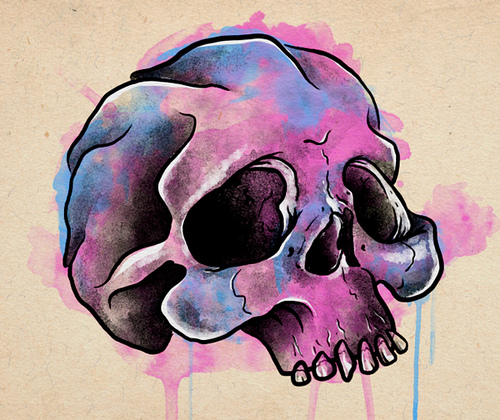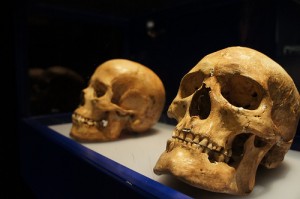 I shouldn’t say this. In fact, as someone who covers the field of archaeology for a living, I probably shouldn’t even be thinking this. But I find myself wondering increasingly whether it’s time for some dirt archaeologists to relinquish one of their great pleasures, namely the beloved rite of summer: field season.
I shouldn’t say this. In fact, as someone who covers the field of archaeology for a living, I probably shouldn’t even be thinking this. But I find myself wondering increasingly whether it’s time for some dirt archaeologists to relinquish one of their great pleasures, namely the beloved rite of summer: field season.
I say this as someone who loves the field, albeit in the hit-and-run way that journalists favor. Each summer I look forward to stuffing faded jeans, t-shirts and a couple of pounds of steno pads into an old canvas duffle bag—the bag my husband bought at an army surplus store in Edmonton for $3 in the 1970s—and catching a plane somewhere, nervous, expectant, thrilled to be heading off.  At the other end, usually a long way from civilization, I plunk my bag down in some sprawling tent city or field-camp house and then hustle off to meet the team. Invariably, they are young, much younger than me—grad students mostly on a great adventure in a place that’s often heartbreakingly beautiful, like the cactus lands of the lower Pecos or the lavender fields of southern France. Very little in life, I’ve found, beats the strange joy of living with strangers in a kind of hippie commune atmosphere, in a place completely divorced from its time, a place before Facebook and Twitter.
At the other end, usually a long way from civilization, I plunk my bag down in some sprawling tent city or field-camp house and then hustle off to meet the team. Invariably, they are young, much younger than me—grad students mostly on a great adventure in a place that’s often heartbreakingly beautiful, like the cactus lands of the lower Pecos or the lavender fields of southern France. Very little in life, I’ve found, beats the strange joy of living with strangers in a kind of hippie commune atmosphere, in a place completely divorced from its time, a place before Facebook and Twitter.
Often, like my archaeologist-friends, I dream about the field in the off-season. And yet, I think those days are numbered for many researchers. Digging is an expensive proposition, and archaeologists as a whole have excavated far more sites than they really know what to do with. Museum shelves sag under the tonnage of brown cardboard boxes filled with untouched, unanalyzed, unreported finds—sherds, projectile points, textiles, shells, butchered animal bones, fire-broken rock, soil columns, bags of fossilized feces, and human skeletal remains. Most archaeologists have decades of work ahead of them, just studying collections they made in previous years.
This lab work isn’t half as much fun as field life in Tonga or Ecuador, but there’s a lot to be learned, a lot to be seen and understood for the first time. At the Centre for Evolutionary Medicine at the University of Zurich, for example, Christina Warinner, an evolutionary geneticist has been sampling and analyzing the dental calculus that coats teeth in fossil skull collections. It turns out that ancient humans accumulated as much as 600 milligrams of calculus—a mineralized biofilm peppered with food remnants and oral bacteria—on their teeth. (We collect much less today, thanks to the zeal of dental hygenists: in a typical appointment, a hygienist pries loose just 10 to 30 milligrams from our teeth.)
 But back to the fossil plaque. Warinner has discovered an astounding amount of DNA embedded in the calculus coating medieval German teeth—about 1000 times more by weight than researchers customarily find in fossil bones. This is very good news for geneticists, who often struggle to extract enough ancient DNA for their work. Moreover, the DNA is very diverse. Not only did Warinner find human DNA: she also identified that belonging to some 2,000 to 4000 species of bacteria. While some species are harmless, others are known pathogens, and as Warinner explained recently in a published interview in The Guardian, “that should allow us to investigate the long-term evolutionary history of human health and disease, right down to the genetic code of individual pathogens, and it should allow us to reconstruct a detailed picture of the dynamic interplay between diet, infection and immunity that occurred thousands of years ago.”
But back to the fossil plaque. Warinner has discovered an astounding amount of DNA embedded in the calculus coating medieval German teeth—about 1000 times more by weight than researchers customarily find in fossil bones. This is very good news for geneticists, who often struggle to extract enough ancient DNA for their work. Moreover, the DNA is very diverse. Not only did Warinner find human DNA: she also identified that belonging to some 2,000 to 4000 species of bacteria. While some species are harmless, others are known pathogens, and as Warinner explained recently in a published interview in The Guardian, “that should allow us to investigate the long-term evolutionary history of human health and disease, right down to the genetic code of individual pathogens, and it should allow us to reconstruct a detailed picture of the dynamic interplay between diet, infection and immunity that occurred thousands of years ago.”
Not too shabby, I’d say. It looks to me as if archaeologists could be rolling in data if they just spent a bit more time looking at old collections, old satellite images, old human remains, and thinking about new ways of extracting information from them. Life in the field is oh so seductive. But those rows of identical cardboard boxes on museum shelves beg to be studied, and they just may be the future of the discipline.
Photos: Illustration of skull by bwrahbwrah jonguh; photo of skulls by Pieter Cornelissen; photo of peridontal bacteria by Darren Ready, courtesy Welcome Images.
But there’s still nothing like the thrill of finding a coin from 1586 just lying on top of a path in the middle of Spain…and I’m still wondering why it is a French coin…
Yes, I definitely understand the appeal of finding something so unexpected and cool. I think that love of discovery is somehow hard-wired into us. It’s just that I think more time needs to be spent on the other half of the equation — figuring out how the hell that coin got to a path in Spain, and what it can tell us about the person who lost it.
Heather, I can’t help thinking about NASA storing all those moon rocks in all those boxes. Or astronomers who hardly need to go to the (field) telescope any more because they put all their data in electronic boxes — which they, unlike archeologists, spend all their time rooting around in.
I love those astronomers! I suspect that telescope time can be a scarce commodity and that many researchers have to make the most of it. Perhaps we are not so far off that in archaeology, too: field work is becoming so hideously expensive that archaeologists will have to do it sparingly and really milk the data for everything its worth. I definitely see signs of that. But meanwhile all those museum collections are gathering dust….
I look at astronomy and how it is changing. Astronomers rarely go to mountain observatories any more. We submit a proposal on line, a time assignment committee ranks a proposal, and if you are lucky you get the telescope time. But now it is common that someone else takes the data and you ssh it from some remote server. Not very romantic. At the risk of sounding like some older astronomer who says that in MY day … hmmm, come to think of it, I AM an older astronomer. I bet my thesis advisor said the same about me. But one of the great joys of going to the mountain was completely unplugging from everything else and being able to do your science and talk to other researchers, which I imagine is what field work is like in archeology. And by being at the telescope you had one tremendous gift – you could decide to look at something else outside of your proposal if time allowed. Many astronomers, like me, were able to jump subjects because they decided to observe, say, a strange cool star even though they are a cosmologist who are supposed to be looking at distant galaxies. Much of the spontaneity of our science is lost if you can’t go to the field – or the mountain observatory.
The interview link does not work. I think you have accidently added http at the end of the url, that makes it not working. I wanted to be an archeologist, it looks cool to figure out which one is from when and where. But it is an easy thing to do.
Fixed it, Jaxon. I’m sorry — try it now.
Nicholas: Yes, I think you’ve captured exactly the joy of the field–unplugging, batting around ideas over camp dinners, and being spontaneous, finding things that you weren’t even supposed to be looking for. I had never thought about the parallels to astronomy before, but they are sure there — or at least they were in those now lost days of astronomy.
But there’s one other really important thing that archaeologists love about the field that I didn’t mention. They can tailor the research design of the excavation to suit their exact questions, and they can document the hell out of the key strata. Often the old museum collections came from excavations dug with much simpler methodology and poorer stratigraphic control. So some researchers really don’t want to work with these artifacts: they prefer to go out and get new data. Understandable.
But I still think the old collections have rich veins of data that could be mined.
Wonderfully provocative post! There are probably parallels in every field–I think of the rows upon rows of unstudied biological collections I’ve seen. For the fourth chapter of my thesis, I pored over decades of archived plankton tows housed at Scripps and NOAA in San Diego, and felt that the single study I completed was but a fraction of what could be learned. I remember thinking, “If only I’d known all this existed when I started grad school, I might not have collected any new samples at all!”
But then of course I would have missed out on all the myriad joys of field work…